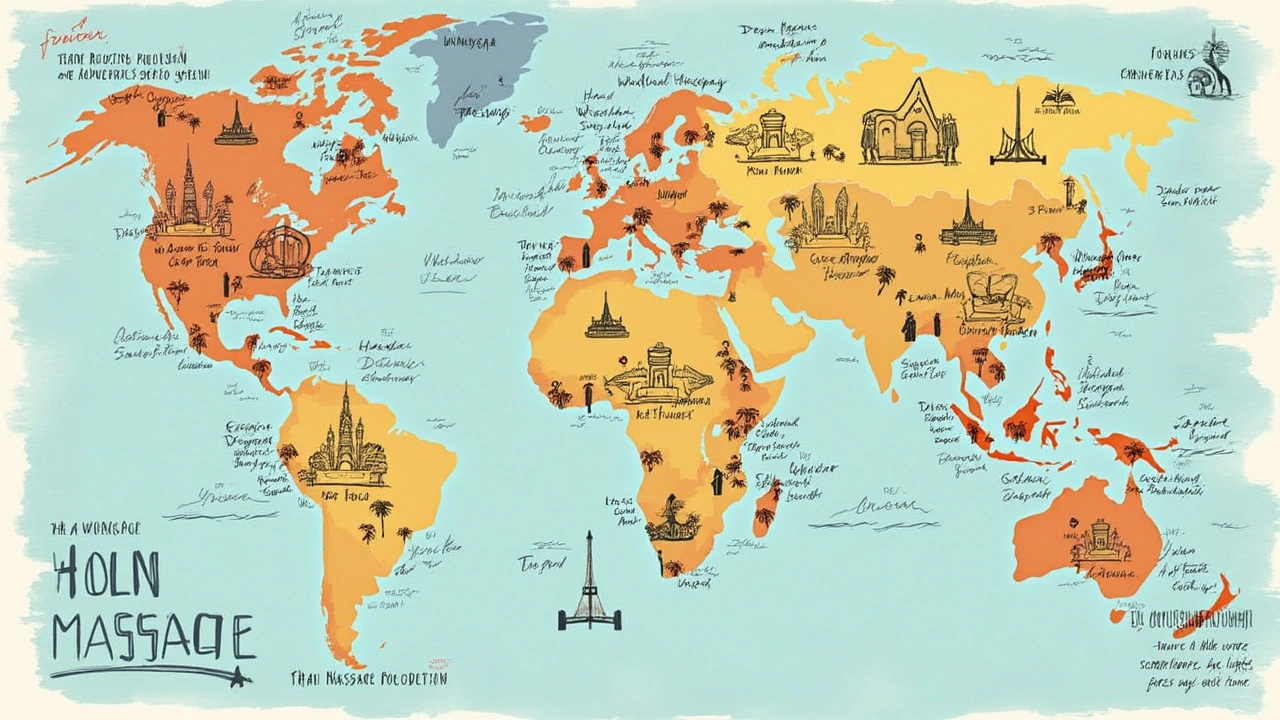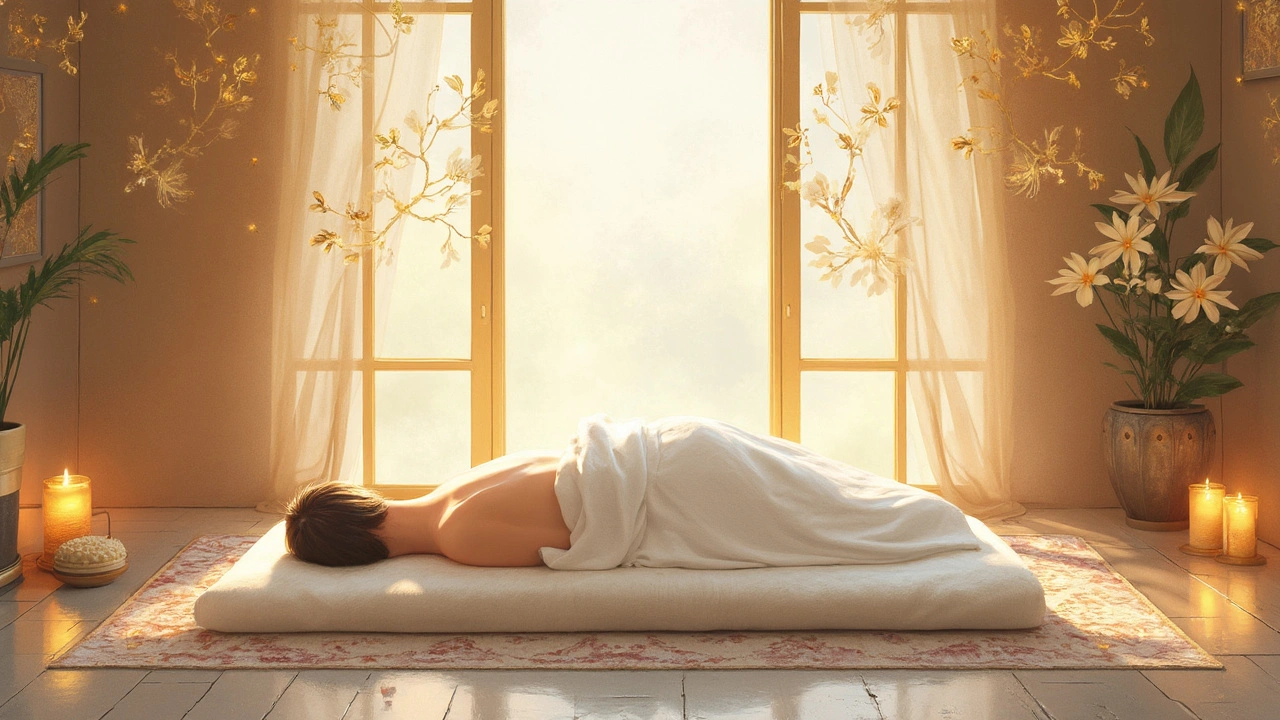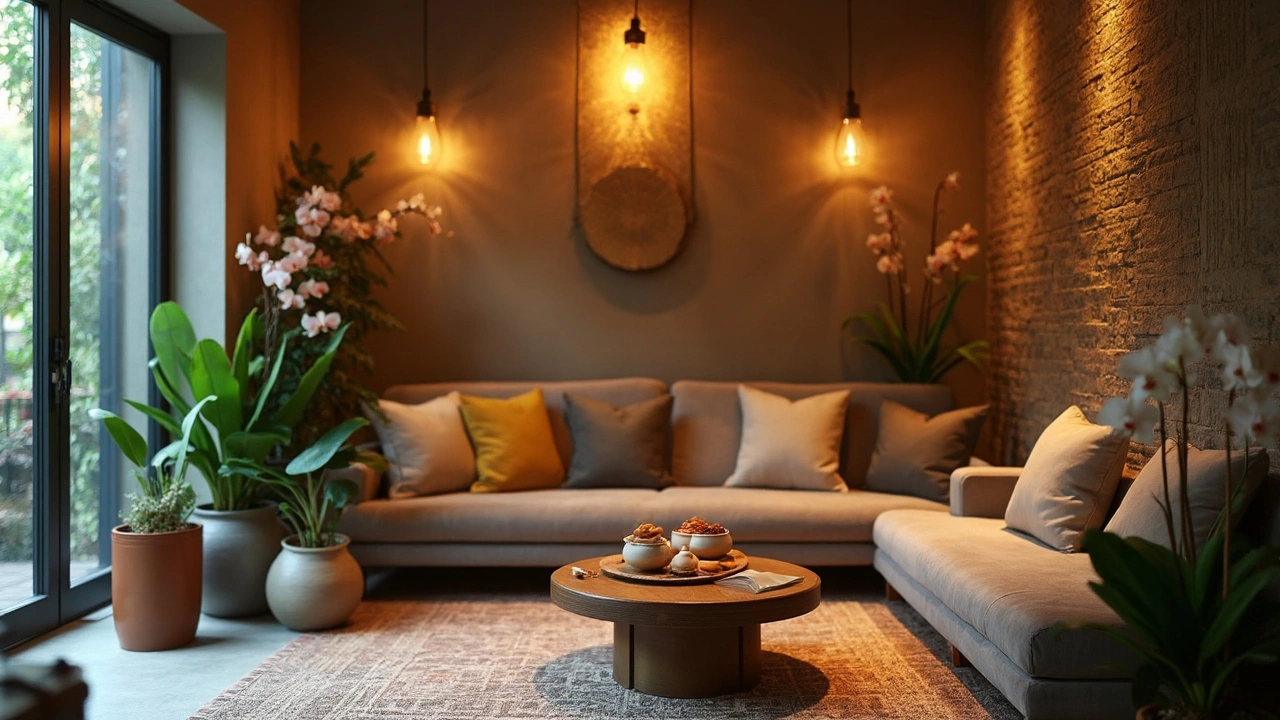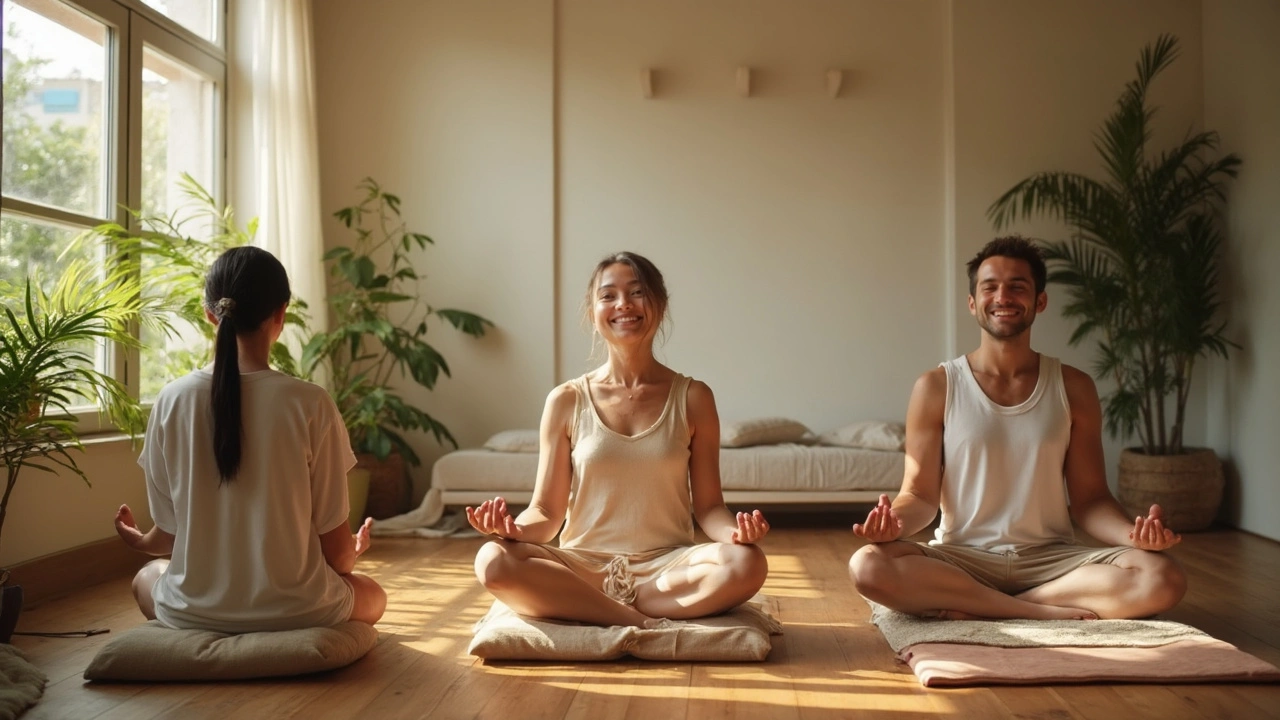Tired calves, stiff shoulders, and that jet lag fog—sometimes travel leaves your body feeling like a knotted pretzel. So what’s the fix? If you land in Bangkok, London, Sydney, or Brooklyn, it’s easy to find a Thai massage studio promising sweet, stretchy relief. But are all massage studios created equal? Not a chance. A really good Thai massage can reset your energy and make you feel ready to tackle your next adventure—or at least the next flight.
Trying to pick a great place when there are dozens on every street can be overwhelming. Some studios set the mood with cozy tea and soft music; others focus on traditional techniques that have been passed down for generations. You'll want to avoid spots that rush you through or skip the genuine Thai stretches (those really make a difference).
Curious how to spot a top-tier massage studio? You don’t need to be an expert. With just a couple of tips and an eye for honest reviews, you can find a studio where you walk out feeling ten pounds lighter and a lot more zen. Ready to feel like your best self, wherever you happen to roam?
- Key Takeaways: The Top Studios Worldwide
- Choosing a Thai Massage Studio: What Matters Most
- How a Thai Massage Session Feels
- Practical Travel Tips for Booking and Safety
- Thai Massage vs. Other Popular Techniques
Key Takeaways: The Top Studios Worldwide
Searching for that next-level Thai massage isn’t just about picking a random spot on Google Maps. Reputation, quality of therapists, hygiene, and authentic technique all count. The truly great studios aren’t always the fanciest, but they consistently get rave feedback from locals and travelers. Here’s a quick rundown of top-rated studios across different continents that set the gold standard for real Thai massage:
- Wat Pho Thai Traditional Massage School (Bangkok, Thailand): Arguably the birthplace of Thai massage. Therapists here are trained at the famous Wat Pho temple, considered the oldest massage school in Thailand. Expect textbook moves, strong stretches, and serious attention to detail. Book in advance—walk-ins tend to get long waits.
- Health Land Spa & Massage (Bangkok, Thailand): A favorite with both expats and tourists. Prices are reasonable, branches are everywhere, and you get quality from therapists who know what they’re doing.
- Ban Sabai Spa (Chiang Mai, Thailand): Smaller and more local, this spot nails the balance of authenticity and comfort. You’ll often find well-trained Thai staff and a mellow setting after a day visiting temples.
- Sabai Sabai Thai Massage (London, UK): Authentic Thai-owned studio right near Covent Garden. Lots of repeat customers thanks to friendly staff and consistent quality.
- Baan Thai Massage (Sydney, Australia): Real Thai therapists and proper stretching, with modern touches. Sydney locals swear by this place to loosen up after that long work week.
- Bodhi Thai Massage (New York, USA): Brooklyn may be miles from Bangkok, but this studio stands out for an old-school vibe and therapists who straight-up know their stuff. It’s a local favorite for a reason.
- Or Tor Kor (Tokyo, Japan): Small, tucked away, but wildly popular with expats. Japanese standards for cleanliness paired with authentic technique.
Wondering how these compare on important details? Check out this quick data table for a better look at what sets each apart—because when you're tired and achy, you want to know exactly where you’re headed!
| Studio Name | Location | Average Session Price (USD) | Known For |
|---|---|---|---|
| Wat Pho Thai Massage School | Bangkok, Thailand | $15-25/hour | Original Thai technique, historical roots |
| Health Land Spa & Massage | Bangkok, Thailand | $20-30/hour | Clean, reliable, affordable luxury |
| Ban Sabai Spa | Chiang Mai, Thailand | $18-25/hour | Chill, local experience |
| Sabai Sabai Thai Massage | London, UK | $65-90/hour | Super central, genuine Thai staff |
| Baan Thai Massage | Sydney, Australia | $70-85/hour | Real Thai therapists, modern ambience |
| Bodhi Thai Massage | New York, USA | $80-100/hour | Old-school style, popular in Brooklyn |
| Or Tor Kor | Tokyo, Japan | $50-70/hour | Detail-oriented, extremely clean |
No need to settle for a mediocre rubdown. Use this list as your cheat sheet for the best Thai massage studios worldwide. Whether you want something cheap and cheerful in Asia or are splurging in a big city, these picks get you the real deal.
Choosing a Thai Massage Studio: What Matters Most
Not all Thai massage studios are cut from the same cloth. Some deliver the real deal while others may just imitate the vibe. The trick is knowing what to look for before you book.
First things first—check reviews, but focus on the ones that mention specific details, not the generic “great service” stuff. Locals and frequent travelers usually know the hidden gems, and they’re not shy about sharing. If people mention therapists’ names or talk about particular stretches, that’s a good sign you’re looking at a trusted place.
- thai massage style: Authentic studios usually list different techniques: traditional (lots of stretches), foot massage, or oil-based options. If they only have one menu item, be a bit cautious.
- Cleanliness: It sounds basic, but it matters. Check if guests rave about hygiene or if the staff switches towels between sessions. Some of the world’s top studios post photos of their rooms for transparency.
- Certification: In Thailand, a legit studio will have therapists who trained at places like the Wat Pho Thai Traditional Medical and Massage School. In other countries, ask if therapists have formal certificates—they’re often proud to show them off.
- Transparent pricing: Studios with prices listed on their website or at the counter usually mean fewer surprises when it’s time to pay. If you feel like you have to haggle every step, it’s probably not worth your time.
- Atmosphere: If you walk in feeling tense, you should walk out floating. Studios that serve tea, keep noise low, and let you pick your massage strength are usually looking out for your comfort.
There’s also the matter of communication. Don’t be shy—ask if you can tell the therapist about sore spots or if you want less (or more) pressure. Good studios want you to leave happy, not limping.
Last thing: be wary of places with aggressive street hawkers, prices that seem too low for the area, or windows blocked from the street. That usually signals a place trying to hide something—not where you want to relax. Stick to these pointers, and you’ll find a studio that delivers the real magic of Thai massage, wherever your journey takes you.

How a Thai Massage Session Feels
If you’ve never had a Thai massage before, expect something a little different from your standard spa experience. You’ll usually keep your clothes on, wear comfy cotton pajamas the studio provides, and lie down on a padded mat on the floor. Right away, you’ll notice there’s no oil or lotion—they’re not needed in most traditional Thai sessions.
From the start, the massage feels active and stretches your body in ways you probably haven’t tried since gym class. The therapist uses their hands, elbows, knees, and even feet to press, pull, and stretch your muscles. Some folks call it “lazy yoga” because you’re stretched and moved around without lifting a finger. If you’re hoping to just zone out, don’t worry. The rhythm is slow and steady, with every stretch and press designed to help you relax deeper while unknotting muscles you didn’t know were tight.
A typical session lasts 60 to 90 minutes. Therapists work along your body’s ‘sen’ lines—the traditional Thai energy paths—to boost circulation and ease tension. According to the Thai Ministry of Public Health, “Thai massage reduces muscle tension and improves joint mobility, resulting in a feeling of physical lightness and mental calm.” You’ll usually finish up with a gentle head, neck, or face massage, which feels ridiculously good after all that stretching.
"Thai massage is more than just relaxation. It’s a powerful fusion of movement, pressure, and mindfulness that’s been refined over centuries." – Dr. Apichai Pochanakit, Thai Traditional Medicine Association
Sometimes you might hear little pops from your joints or feel the intensity in tight spots, but you should always speak up if anything feels uncomfortable. Good therapists check in with you before and during the session, making sure the pressure is just right for you. Afterward, it’s normal to feel lighter, looser, and surprisingly refreshed—kind of like hitting a reset button for your whole body. If you’re traveling, you’ll really appreciate how a proper thai massage can get you back in the game fast.
Practical Travel Tips for Booking and Safety
Finding a solid Thai massage studio while you’re on the road doesn’t have to be risky or confusing. A few quick checks and smart habits make all the difference between a trip highlight and a travel horror story.
First, always take a good look at online reviews—think platforms like Google Maps, TripAdvisor, and Facebook. Check recent photos posted by guests too, not just the studio’s own promos. If you see consistent complaints about pressure or weird upcharges, go somewhere else. The best studios post clear prices online and have upfront menus for each massage style.
- Book your session early, especially for popular studios in tourist hotspots. Walk-ins sometimes work, but planning ahead—especially for weekends—will save you the disappointment of a full schedule.
- Ask about the therapist’s experience. If you want a specific massage, like Thai herbal compress, check they actually offer it (and that it’s not “out of stock”).
- Tell the therapist about any injuries or if you prefer a gentle touch—don’t tough it out just to be polite. Communication makes your session way more enjoyable.
- Look for a clean lobby and treatment room. Fresh towels and a neat setup are good signs. Hygiene isn’t negotiable. If it smells odd or looks dirty, leave right away.
- Trust your gut. Do the staff seem polite and professional? A great studio won’t pressure you into add-ons or push you to pay with cash only.
Protecting yourself goes beyond just comfort. In a 2024 survey, the World Spa & Wellness organization highlighted that "clear communication and visible hygiene standards are the top things guests mention in positive reviews," so don’t be afraid to ask questions or move on if things feel off.
“The number one safety tip is to choose venues that prioritize hygiene and have well-trained staff. Proper studios happily answer questions about cleanliness and therapist qualifications.” — World Spa & Wellness, 2024
If you’re traveling solo, share your appointment details with a friend. Double-check the studio’s location using Google Street View so you don’t end up somewhere sketchy. Don’t carry valuables you don’t need—leave passports, extra cards, and big cash stashes at your hotel. Most top studios offer safe storage for your bag, but try to keep it simple.
Bottom line: a little research and a dose of common sense mean you can focus on that glorious stretch and unwind, instead of worrying about what might go wrong. Booking at a trusted, reputable thai massage studio sets you up for a truly relaxing experience, wherever your travels take you.

Thai Massage vs. Other Popular Techniques
If you've ever booked a massage, you might’ve been hit with a menu of options: Thai, Swedish, deep tissue, Shiatsu, and even hot stone. At first glance, they all sound kind of similar—rub, knead, relax, repeat. But trust me, there’s a world of difference when you stretch out on that mat for a thai massage compared to the rest.
Thai massage usually happens on a floor mat instead of a massage table, and you typically keep your clothes on. There’s a lot of movement—instead of just lying there, you’ll be guided through a series of gentle stretches. It’s kind of like having someone do yoga with you and for you. Therapists use their palms, elbows, knees, and even feet to work your muscles and joints. It can feel intense but super refreshing, especially after a long flight or days of exploring a city.
Traditional Swedish massage, on the other hand, is all about slow strokes and kneading, mostly with oil. You’re usually under a sheet, and it’s focused on relaxing your muscles rather than stretching them. This style is great if you want to unwind and maybe even take a nap while someone smooths out those muscle knots.
Deep tissue massage kicks things up a notch from Swedish with firmer pressure, targeting those stubborn tight spots. It’s ideal for chronic aches but can be a bit much if you’re not used to intense pressure.
Shiatsu, a Japanese style, shares some similarities with Thai massage because it uses finger and palm pressure on specific points across the body. But there’s less stretching and more focus on fixed pressure based on energy lines.
- Thai Massage: Clothes on, no oil, mix of pressure and stretching, full-body movement.
- Swedish Massage: Usually clothes off, oil used, gentle strokes, relaxation-focused.
- Deep Tissue: Stronger pressure, targets deep muscle layers, oil used.
- Shiatsu: Pressure point work, often on a mat, clothes on, less stretching.
| Technique | Pressure Level | Oil Used? | Clothing | Main Benefits |
|---|---|---|---|---|
| Thai Massage | Medium to high (plus assisted stretching) | No | Keep clothes on | Flexibility, energy, joint relief |
| Swedish Massage | Light to medium | Yes | Off, under sheet | Relaxation, stress reduction |
| Deep Tissue | High | Yes | Off, under sheet | Muscle tension, chronic pain |
| Shiatsu | Medium | No | Keep clothes on | Balance, energy flow, relaxation |
If you crave stretching and want to feel energized for the next leg of your journey, a Thai massage really stands out. But if you’re just looking to zone out and let go, Swedish or deep tissue might be your better match. Know what you want from the session, and you’ll pick your perfect fit.



